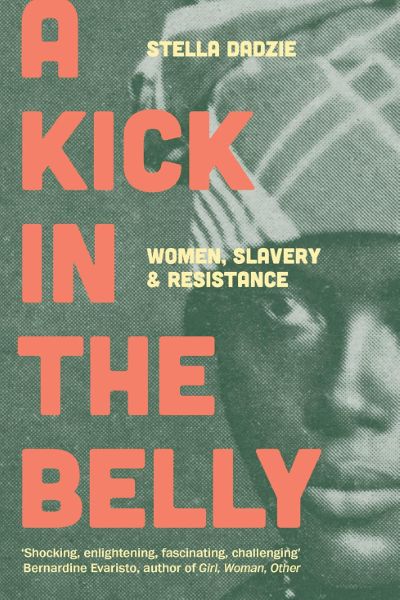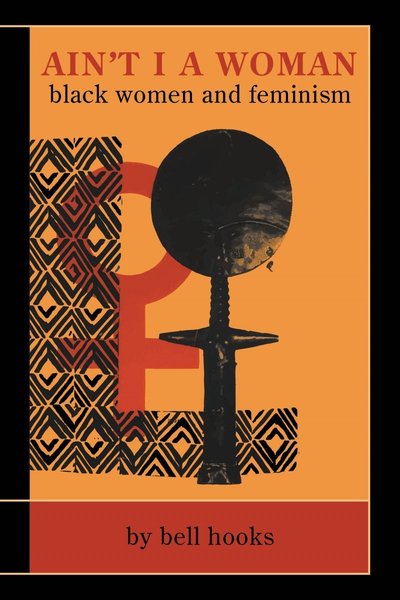A Kick in the Belly: Women, Slavery and Resistance
Reveals the forgotten history of enslaved women, reconstructing their pivotal role and indomitable spirit in the struggle against slavery in the Caribbean region.

📝 Book Review
In the long dark night of colonial history, Stella Dadzie’s “A Kick in the Belly: Women, Slavery and Resistance” emerges like a powerful beam of light, illuminating the female figures deliberately forgotten by mainstream historiography. This groundbreaking historical work, published in 2020, is not only a profound reconstruction of enslaved women’s experiences in the West Indies but also a fundamental challenge to the entire colonial historiographical tradition. With irrefutable historical sources and meticulous analysis, it rewrites the subjectivity and agency of women in the history of slavery.
Dadzie, as a British-Ghanaian activist and historian, embodies a cross-cultural and decolonial academic stance through her very identity. As a social activist long committed to anti-racist movements, Dadzie profoundly understands the political nature of historical writing—she understands that controlling historical narrative means controlling the distribution of power. Her academic background fuses history, women’s studies, and postcolonial theory, enabling her to examine traditional historical materials from entirely new perspectives and discover complex truths hidden by mainstream narratives.
Revolutionary Historical Methodology
The metaphorically charged title “A Kick in the Belly” is itself a powerful counter-attack against traditional historiography. This “kick in the belly” refers both to the physical violence enslaved women endured during childbirth and symbolizes the deadly counter-attacks they launched against the slavery system. This dual meaning precisely captures the book’s central theme: enslaved women were both recipients of violence and subjects of resistance. Their bodies became sites where colonial power operated, but simultaneously became soil where resistant forces grew.
The core contribution of this work lies in completely overturning the passive image of enslaved women in traditional historiography. In mainstream historical narratives, enslaved women are often described as double victims—suffering both racial oppression and gender discrimination, molded as passive groups lacking capacity for resistance. However, through meticulous examination of abundant primary sources, including plantation records, court documents, missionary reports, and slave owner diaries, Dadzie reconstructs a completely different historical picture.
In her narrative, enslaved women not only possessed strong consciousness of resistance but were core forces of resistant culture within slave communities. Her analysis of enslaved women’s forms of resistance is particularly profound and comprehensive. Dadzie identifies multilayered and diversified resistance strategies, from the most microscopic daily resistance to the most intense armed uprisings.
Daily Resistance and Cultural Preservation
At the daily level, enslaved women continuously challenged plantation authority structures through work slowdowns, tool sabotage, food theft, and caring for sick and weak companions. They utilized their special positions in domestic labor to gather information and transmit messages, becoming indispensable nodes in resistance networks. More importantly, they maintained and transmitted African cultural traditions while creating new cultural forms, preserving the spiritual independence of slave communities.
In cultural resistance, Dadzie particularly emphasizes enslaved women’s central role in religious practices. They not only maintained faith in traditional African religions but also skillfully combined these with Christian elements, creating hybrid religious forms with liberatory significance. These religious practices became important sources of community cohesion and provided symbolic resources and organizational frameworks for political resistance.
Witchcraft, prophecy, healing, and other traditional female roles acquired new political significance in slave society, becoming important weapons for challenging master authority and maintaining community dignity. These practices demonstrated how enslaved women transformed traditional gender roles into sources of power and resistance.
Armed Resistance and Leadership
Dadzie’s analysis of enslaved women’s participation in armed resistance breaks the male-centered historical narrative pattern. Traditional historiography often describes armed uprisings as purely male enterprises, with women only as passive followers or beneficiaries. However, through in-depth study of specific uprising events, Dadzie reveals women’s crucial roles in planning, organizing, and executing armed resistance.
They not only provided logistical support but directly participated in combat, and in some cases even assumed leadership roles. This reinterpretation not only restores historical complexity but also provides important insights for understanding the gender politics of resistance movements. Women like Queen Nanny of the Maroons in Jamaica exemplified how enslaved women could become military leaders and political strategists.
Methodological Innovation in Decolonial History
At the methodological level, Dadzie demonstrates typical characteristics of decolonial historiography. She is not satisfied with simply adding women’s content but fundamentally questions the epistemological foundations of traditional historiography. She points out that colonial historiography not only favors colonizers’ perspectives in content but perpetuates colonial power relations in methodology.
Through reinterpreting familiar historical sources, incorporating oral history traditions, and employing analytical tools from anthropology and sociology, she constructs a more inclusive and pluralistic historical writing method. This methodological innovation is importantly embodied in her creative interpretation of “silence.”
In colonial archives, enslaved women’s voices are often distorted or suppressed, their experiences filtered and renarrated through others’ eyes. Facing such source limitations, Dadzie develops a “reverse reading” strategy, inferring enslaved women’s resistance activities from colonizers’ complaints, fears, and suppression measures. She treats archival silence itself as evidence, proving the widespread nature and effectiveness of enslaved women’s resistance activities.
Intersectional Analysis of Oppression
Dadzie’s analysis deeply explores the complex intersection of gender, race, and class. She points out that the oppression faced by enslaved women is not a simple accumulation of gender oppression and racial oppression but a unique form of oppression requiring specialized theoretical tools for understanding.
The slavery system’s special utilization of women’s bodies—including commodification of reproductive functions, institutionalization of sexual violence, and instrumentalization of motherhood—created a unique form of exploitation. Simultaneously, this special oppressive position also provided women with unique opportunities and strategies for resistance.
The enslaved woman’s body became a contested site where multiple forms of power operated. Colonial authorities sought to control women’s sexuality, reproduction, and labor, while enslaved women developed strategies to maintain autonomy over their own bodies and those of their children.
Economic Analysis and Reproductive Politics
In economic analysis, Dadzie reveals enslaved women’s central position in plantation economies. They were not only primary laborers, undertaking various work from field labor to domestic services, but also key to the entire slavery system’s reproduction. Their reproductive capacity directly related to slave owners’ wealth accumulation, while their childcare labor ensured the cultivation of the next generation of slaves.
Precisely because they recognized their economic importance, enslaved women developed unique resistance strategies, including refusing to bear children, infanticide, and utilizing childcare responsibilities to protect and educate the next generation. These strategies challenged the fundamental logic of the slavery system by disrupting its reproductive mechanisms.
The book’s analysis of motherhood politics is particularly profound. Under slavery, motherhood became a highly politicized concept. Slave owners attempted to place enslaved women’s motherhood completely under their control, viewing their children as their own property. However, enslaved women maintained their maternal rights through various means, from fighting for better living conditions for their children to transmitting cultural traditions, from protecting children from violence to educating them with resistance consciousness.
Intergenerational Resistance and Cultural Transmission
Dadzie’s analysis of intergenerational resistance provides new perspectives for understanding long-term liberation struggles. She demonstrates how enslaved women transmitted resistance spirits to the next generation through oral traditions, cultural practices, and value transmission. This invisible educational process played a crucial role in maintaining slave communities’ political consciousness and cultural identity, laying deep foundations for ultimate liberation struggles.
This form of resistance operated through storytelling, songs, religious practices, and everyday teachings that preserved African cultural knowledge while adapting it to New World conditions. Women served as cultural bridges, maintaining connections to ancestral traditions while innovating new forms of cultural expression that sustained community identity across generations.
Contemporary Relevance and Global Connections
In the globalization era, this work’s significance becomes even more prominent. When neoliberal policies create new forms of slavery globally, when migrant women endure similar exploitation in global care chains, Dadzie’s reconstructed history of enslaved women’s resistance provides important reference for understanding contemporary exploitation and resistance.
Her work reminds us that history is not only a record of the past but also a resource for present struggles. The strategies developed by enslaved women—from everyday forms of resistance to organized rebellion—offer insights for contemporary movements fighting various forms of oppression and exploitation.
Historiographical Innovation and Academic Impact
From the perspective of historical theory, “A Kick in the Belly” represents important development in “history from below” practice. It not only focuses on elite politics and macro structures but delves deep into ordinary people’s daily experiences, discovering deep dynamics of historical change from within.
This methodological approach holds universal guiding significance for writing marginalized groups’ histories, providing possibilities for voice to those silenced in traditional historiography. Dadzie’s work demonstrates how archival sources can be read against their grain to reveal hidden forms of agency and resistance.
Memory, Trauma, and Liberation
Dadzie’s work also provides important insights for thinking about historical trauma and collective memory. She demonstrates how to discover forces of resistance and dignity maintenance while acknowledging historical pain. This historical writing is not intended to perpetuate victim identity but to discover and inherit traditions of liberation.
Her work proves that true historical justice requires not only acknowledging past injustices but discovering past struggles’ wisdom. The book shows how historical trauma can be transformed into sources of strength and knowledge rather than remaining only as sources of pain and victimization.
Influence on Contemporary Movements
“A Kick in the Belly” holds important inspirational significance for contemporary social movements. It reminds us that resistance occurs not only in large-scale public confrontations but also exists in daily microscopic practices. It demonstrates how marginalized groups maintain dignity, transmit culture, and organize resistance under extremely difficult conditions.
These historical experiences provide valuable strategic wisdom for groups today facing various forms of oppression. The book’s insights about the importance of cultural preservation, community building, and intergenerational transmission remain highly relevant for contemporary movements seeking long-term social transformation.
Conclusion: Reclaiming Historical Agency
Today, “A Kick in the Belly: Women, Slavery and Resistance” remains important literature in decolonial historiography and Black feminist theory. It not only provides new understanding of Caribbean slavery history but more importantly offers a new way of historical thinking.
In the current context of increasing global inequality and persistent various forms of oppression, the resistance traditions rediscovered by Dadzie still hold strong contemporary significance. This work reminds us that history has never been a unidimensional narrative of oppression but a complex interweaving of oppression and resistance, submission and rebellion.
True historical justice requires us not only to remember pain but also to remember resistance, not only to inherit trauma but also to inherit the legacy of struggle. Through meticulous reconstruction of enslaved women’s experiences, Dadzie demonstrates that even in the most brutal systems of oppression, human dignity and agency persist, finding expression through countless acts of resistance both large and small.
Her achievement lies not only in recovering hidden histories but in providing methodological innovations that can be applied to understanding other marginalized experiences. By centering enslaved women’s perspectives and agency, “A Kick in the Belly” fundamentally challenges how we understand power, resistance, and historical change. It stands as both a historical recovery project and a theoretical intervention, offering tools for contemporary scholars and activists seeking to understand and challenge systems of oppression in their own contexts.
Discussion
读书讨论
分享您对这本书的感想和看法,与其他读者交流见解
加入讨论
分享您对这本书的感想和看法,与其他读者交流见解
加载评论中...
Book Info
Related Topics
🛒 Get This Book
 Buy on Amazon
Buy on Amazon Related Books
读书讨论
分享您对这本书的感想和看法,与其他读者交流见解
加入讨论
分享您对这本书的感想和看法,与其他读者交流见解
加载评论中...

